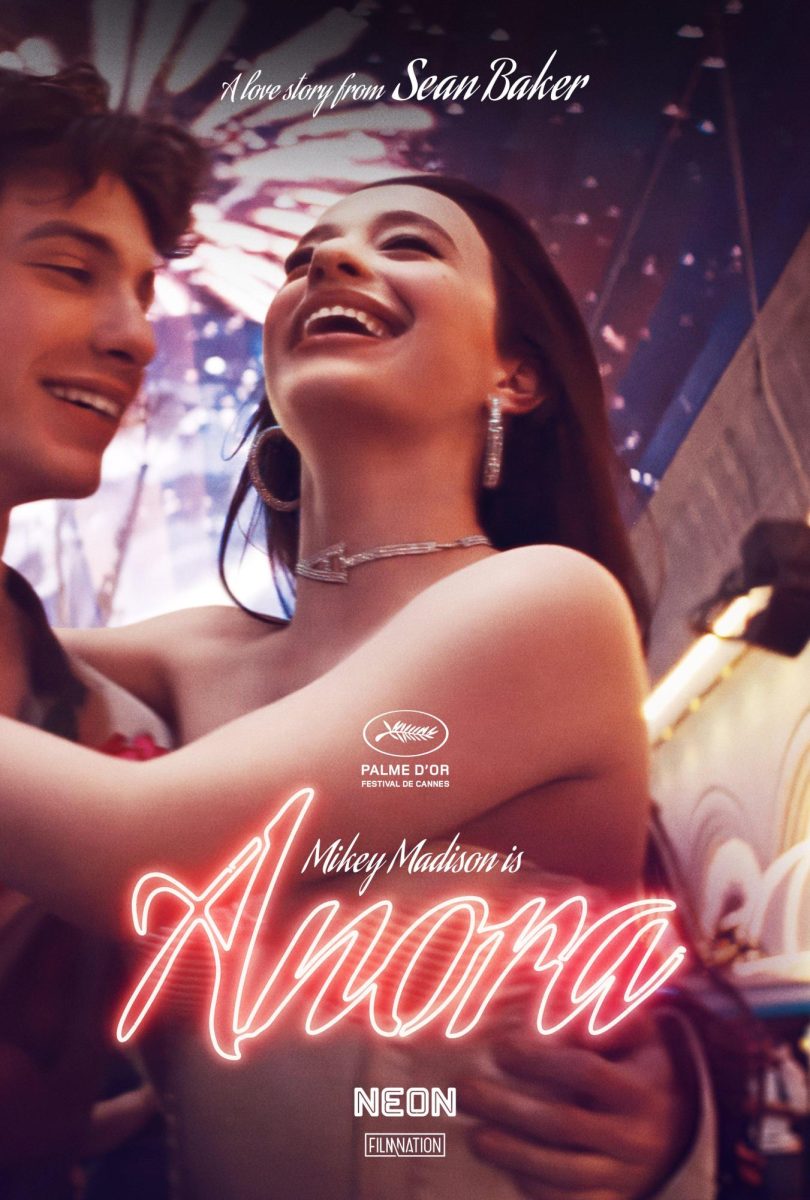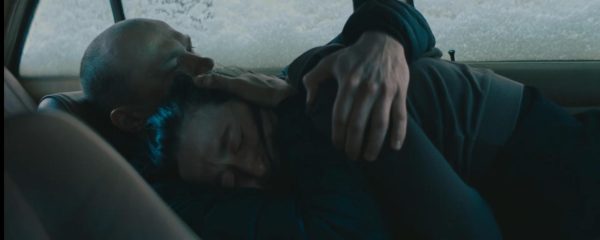
It is undeniable: Hollywood has a thing for giving awards to women playing sex workers.
From Elizabeth Taylor’s devil-may-care Gloria in BUtterfield 8 (1960), to Anne Hathaway’s unfortunate Fantine in Les Misérables (2012), to Emma Stone’s liberated Ella in Poor Things (2024), we can see Hollywood’s certain fascination with awarding Oscars to women playing female sex workers. In fact, actresses have won the Best Actress or Best Supporting Actress award for portraying sex workers 16 times since the beginning of the Academy Awards. As Anora’s lead actress, Mikey Madison, took the stage at this year’s Academy Awards, it was the second year in a row that an actress portraying a woman sex worker won the best actress award.
But before going in more depth about this pattern, let’s take a closer look at Anora (2025), directed by Sean Baker.
Starting with: Who is Anora? She is an erotic dancer from Brooklyn. Even though it is not explicitly stated in the movie, Ani seems to be a Brooklyn resident with Russian roots—or, as others may argue, Uzbek roots. She lives with her sister in a small house.
… Oh? You were expecting more information? Well, too bad, partner, because this is as much as the movie is interested in revealing to us about her character.
What we know about Anora, or Ani, is what the writers considered the most important part of her character: she is a sex worker. We don’t know her past, nor her future. We don’t know about her family, her tastes, or her hobbies. The only time in the movie Ani has a conversation with another woman that does not revolve around a man is when she talks to her unnamed sister: “Did you pick up milk?” Throughout the entire movie, Anora floats in this realm of foreign strangeness, a place where the audience cannot reach her, and, therefore, cannot truly grow acquainted with her.
“In a world ordered by sexual imbalance, pleasure in looking has been split between active/male and passive/female,” writes Laura Mulvey about the film. “The determining male gaze projects its phantasy onto the female figure which is styled accordingly. In their traditional exhibitionist role women are simultaneously looked at and displayed, with their appearance coded for strong visual and erotic impact so that they can be said to connote to-be-looked-at-ness.”
This “to-be-looked-at-ness” Mulvey mentions is embedded in Anora. The spectator, regardless of gender, sees Anora as a heterosexual man would see her: a sexual object. That is particularly apparent in the scene where Anora gives Vanya, one of her admirers, a “private show” in his house.
In this scene, Vanya becomes the sole spectator, and the camera, rather than aligning with Anora’s perspective, aligns with his. Her slow, sensual movements, paired with the suggestive costume, add to the scene’s erotic appeal. The camera consistently presents Anora in the eyes of Vanya, occasionally cutting to reaction shots of him which expose his arousal. In addition to that, several other shots of Anora are from above, as if we are looking down on her. The lighting isolates her body, highlighting contours and gestures in a way that reinforces her role as something to be looked at. This scene tells us more about Vanya than it does about Anora. He wishes to possess and dominate the woman in front of him, so he can continue to look at her and enjoy her visual spectacle.

As Mulvey writes, the active male figure in film, in contrast to the woman, represents the ideal powerful ego that the spectator wishes themselves to be. By mirroring themselves in the male character, the audience can identify with Vanya, and, therefore, indirectly possess Anora, too.
Mulvey also brings up how, in psychoanalytic terms, the female figure poses a real problem: she does not have a penis. The idea behind it is that men, when looking at a woman, think “HEAVENS! Her penis was cut off!” then develop anxiety about their own penises being cut off. This is called castration anxiety, and it organizes the film.
Mulvey writes that there are two ways men cope with their castration anxiety: 1) They completely fetishize the female body, turning it into an object “so that it becomes reassuring rather than dangerous,’ or 2) They punish or forgive the woman for representing that threat to them.
Anora turns the female body into something that has to be looked upon and possessed. In doing this, the movie first fetishizes and objectifies Anora, which aligns with Mulvey’s argument about castration anxiety.
By the end, the story’s perspective seems to shift to Igor, who is trying to separate Anora from Vanya, and it is then that we start seeing Anora through his eyes. Her fragility appears at its peak once Igor holds her in the car as she breaks down. From Igor’s perspective—which is nothing but the male perspective—the viewer sympathizes with Anora, and, with that, the response to the castration threat changes. Through a psychoanalytic lens, we “forgive” her.

Therefore, Anora provides the viewer with more of Mulvey’s insights on how the male characters deal with Anora’s lack of a penis: 1) They fetishize and ultimately punish her, as is the case with Vanya; 2) They forgive her, as is the case with Igor.
With that, the end of Anora does not challenge the issue of Hollywood’s portrayal of women as individuals who need rescuing—it only reframes the fantasy around a different male “savior”: the “hero” who forgives the dangerous woman.
And if you are still not convinced about the overwhelming male gaze prevalent in Anora, reflect on the scene when Anora questions Igor about the reason he did not rape her. He answers by saying that he is not a rapist, but to place the cherry on the cake, she then adds her own conclusion: “Nope. Cuz’ you’re a f*ggot *ss bitch.”
The core of what Ani and the film is suggesting is clear: Rape equals to masculinity—if you do not rape me, you are not masculine enough, and in my view, not masculine enough means “gay,” so I’ll call you that but make it a slur.
What woman would ask a stranger, while alone in the house with said stranger, why he would not rape her, and then, following his answer, would attempt to emasculate him for not doing it? Absolutely none! Male gaze, male gaze, male gaze. Gaze so male that I grew a beard while watching it.
This takes us back to our initial question, which Anne Billson phrases really well: “Why is the Academy so fond of sex worker performances anyway?” she writes. “Is it that they are considered courageous in a world that still looks down its nose at the oldest profession while pretending not to? Or are some male filmmakers so unfamiliar with women from other walks of life that their most deeply considered female characters, when they bother to include any, tend to be on the game?”
My guess is that movies with sex workers provide a convenient vehicle for scriptwriters to succumb to the male desire to “punish” or “forgive” and to objectify and fetishize the woman, hence giving space to portray women through the lens of “to-be-looked-at-ness.” These factors make the movie and its contents perfect for the male gaze, and hence attract more attention from the public than they might be objected to otherwise.
Regarding what the role of a female sex worker means to the actresses playing them, Molly Haskell argues that it offers an opportunity for women to come closer to performing to their fullest potential.
“In some ways, it’s male and female fantasies coinciding. It’s male projections of the kind of women they think they’d like. And for actresses, it’s a juicy role, a stretch, a chance to be bad and desirable and rebellious,” writes Haskell.
The result is that while men get awards for a variety of roles, women have a recurring pattern of being awarded for roles directly tied to their (castrated) bodies.